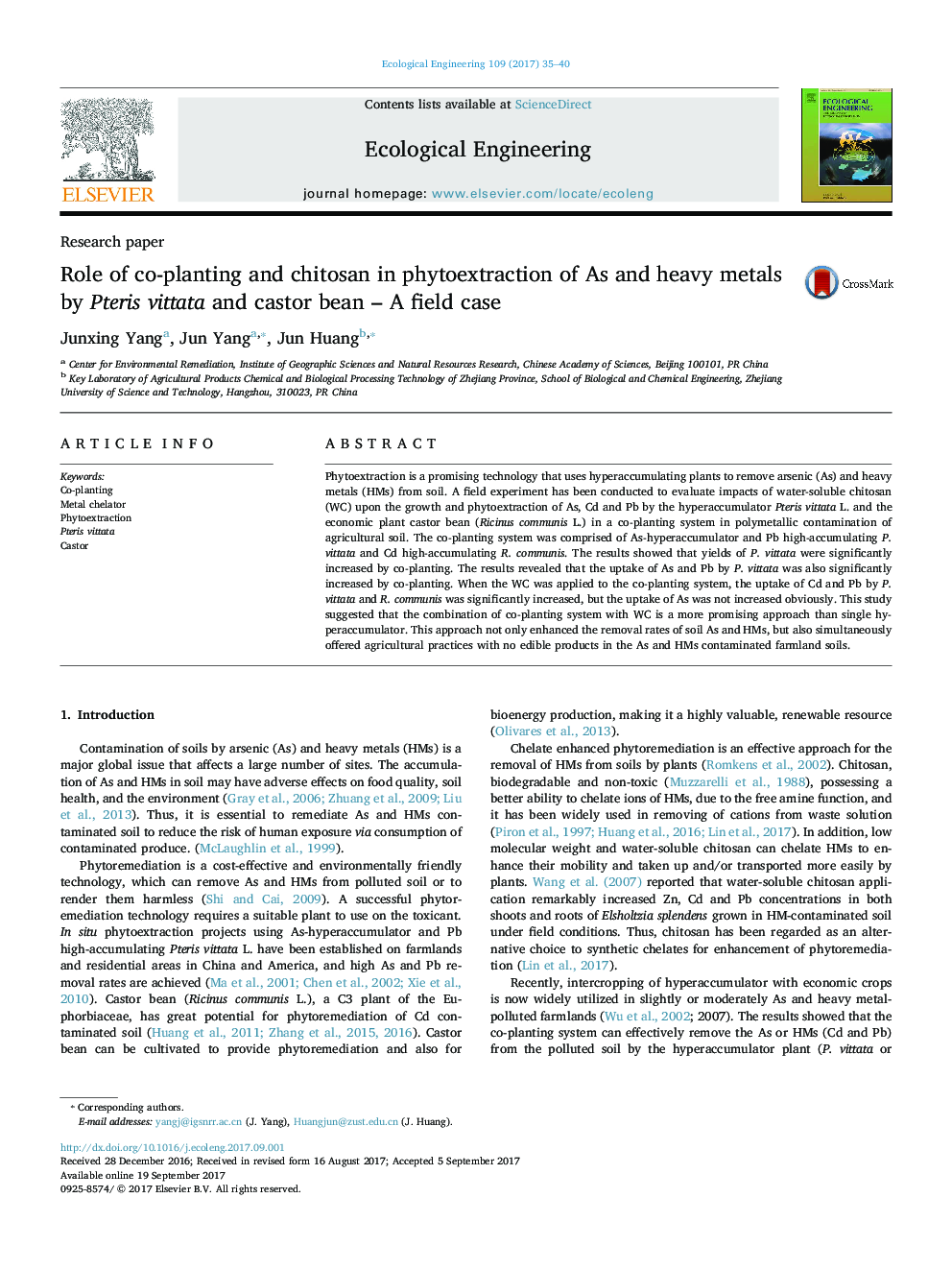| Article ID | Journal | Published Year | Pages | File Type |
|---|---|---|---|---|
| 5743641 | Ecological Engineering | 2017 | 6 Pages |
â¢Co-planting of Pteris vittata and Ricinus communis is a promising approach.â¢Uptake of As and Pb by P. vittata was enhanced by co-planting.â¢Water-soluble chitosan can further improve the removal rates of co-planting.
Phytoextraction is a promising technology that uses hyperaccumulating plants to remove arsenic (As) and heavy metals (HMs) from soil. A field experiment has been conducted to evaluate impacts of water-soluble chitosan (WC) upon the growth and phytoextraction of As, Cd and Pb by the hyperaccumulator Pteris vittata L. and the economic plant castor bean (Ricinus communis L.) in a co-planting system in polymetallic contamination of agricultural soil. The co-planting system was comprised of As-hyperaccumulator and Pb high-accumulating P. vittata and Cd high-accumulating R. communis. The results showed that yields of P. vittata were significantly increased by co-planting. The results revealed that the uptake of As and Pb by P. vittata was also significantly increased by co-planting. When the WC was applied to the co-planting system, the uptake of Cd and Pb by P. vittata and R. communis was significantly increased, but the uptake of As was not increased obviously. This study suggested that the combination of co-planting system with WC is a more promising approach than single hyperaccumulator. This approach not only enhanced the removal rates of soil As and HMs, but also simultaneously offered agricultural practices with no edible products in the As and HMs contaminated farmland soils.
